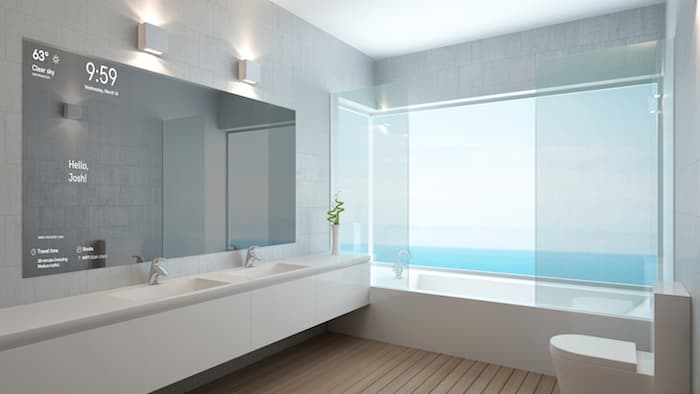
After demoing the Magic Mirror at its Build conference this past March, Microsoft finally explains what makes its smart mirror project so magical. The Redmond, WA-based company divulged some of the mirror’s more technical secrets this week, showing that construction of the project is quite cost-effective and simple to do. A Raspberry Pi 3 powers the Magic Mirror, working alongside a Hosted Web App that runs on Windows 10 IoT Core. This design move allowed Microsoft to use a Universal Windows App that runs across Windows devices, providing the user with opportunities to fully use Windows 10 devices in their technological experiences. Microsoft has even posted instructions for creating the device on your own on its GitHub repository, which is helpful for any curious consumers, as a commercial version of the mirror has yet to appear.
The mirror is meant to provide basic info like time, date, and weather to a consumer caught up in the morning rush, while still working as a standard mirror. Because it uses a LCD display behind a panel of one-way mirrored glass and includes a white-on-black contrast ratio, the mirror allows for someone to easily see both their reflection and the informational display.
A non-intrusive interface presents details strategically so that users can properly use the mirror and get informed about the day. Vital details such as the weather forecast and time appear near eye level at the top of the panel, while less crucial facts like the status of the stock market appear at the bottom. A short personalized greeting appears in the mirror’s main area, but disappears so that someone may see their reflection.

The Magic Mirror even has the technology to scan and recognize a user’s face, allowing for someone to customize what information he or she wants to see immediately in the mornings. Using APIs provided by Microsoft’s Cognitive Services, developers easily achieved this facial recognition within the mirror, which was once difficult technology. The device also holds multiple face profiles, so each member of the household can have a unique layout of information.
“Every user will have a slightly different idea about what’s most important, so this is a great project for exploring personalization through tech,” a Microsoft statement read.
Source: Gizmag, Microsoft, International Business Times
Advertisement
Learn more about Electronic Products Magazine





